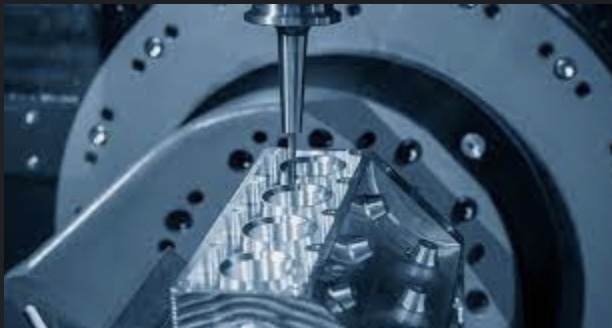Computer numerical control (CNC) machining is a popular manufacturing process that has revolutionized the production of high-quality parts with precision and accuracy. One of the most commonly used materials in CNC machining is aluminum, which is a versatile, lightweight, and easily machinable metal. In this blog post, we’ll explore the advantages of using CNC aluminum parts, the CNC machining process for aluminum, and some common applications of CNC aluminum parts.
Advantages of CNC Aluminum Parts
Precision and Accuracy
One of the most significant advantages of CNC aluminum parts is their high precision and accuracy. CNC machines use computer-controlled cutting tools that ensure parts are made to exact specifications, with tolerances as tight as 0.0001 inches. This level of precision is not achievable with traditional machining methods, making CNC aluminum parts ideal for applications that require tight tolerances.
Consistency and Quality Control
CNC machines can produce large quantities of parts with consistent quality. Once a machine is programmed, it can produce identical parts with the same level of precision and accuracy every time, reducing the need for manual inspection and increasing efficiency. This consistency also ensures that each part meets the same high-quality standards, making CNC aluminum parts a reliable choice for critical applications.
Versatility and Design Freedom
CNC machines can create parts with complex shapes and designs that would be difficult or impossible to make with traditional machining methods. CNC machines use a variety of cutting tools, including drills, end mills, and lathes, which can be used to create intricate designs and shapes. This versatility and design freedom allow for greater innovation and creativity in part design.
Speed and Efficiency
CNC machines can produce parts at a much faster rate than traditional machining methods. Once a machine is set up and programmed, it can produce parts with high accuracy and consistency at a rapid pace, reducing lead times and increasing production efficiency. This speed and efficiency make CNC aluminum parts an excellent choice for high-volume production.
Cost-effectiveness
Although the initial cost of setting up a CNC machine can be high, the cost per part decreases as the quantity of parts produced increases. Additionally, the reduced need for manual labor and inspection reduces overall manufacturing costs, making CNC aluminum parts a cost-effective choice for high-volume production.
CNC Machining Process for Aluminum
Design
The first step in the CNC machining process for aluminum is to create a 3D model of the part using computer-aided design (CAD) software. The CAD file is then imported into the CNC machine’s software.
Programming
The CNC machine is programmed to follow the design, using a set of instructions called G-code. The G-code tells the machine which cutting tools to use, the speed and feed rates, and the path the cutting tool should follow.
Setup
The aluminum material is clamped onto the machine’s worktable, and the cutting tools are inserted into the machine’s spindle. The machine’s software is then calibrated to ensure that the cutting tools are in the correct position.
Machining
The machine is started, and the cutting tools begin to cut away material from the aluminum block, following the path specified in the G-code. The cutting tools are changed as needed to create the desired shape and design.
Finishing
Once the part is machined, it may be finished using a variety of techniques, such as sandblasting, anodizing, or polishing, to achieve the desired surface finish. This finishing step is critical to achieving the desired final product quality.
Applications of CNC Aluminum Parts
Aerospace
CNC aluminum parts are used in the aerospace industry to produce components for aircraft, such as engine parts, landing gear, and structural components. The high precision and accuracy of CNC machining make it an ideal choice for the aerospace industry, where safety and reliability are paramount.
Automotive
CNC aluminum parts are also used extensively in the automotive industry, where they are used to produce engine components, suspension systems, and transmission parts. The high precision and consistency of CNC machining ensure that each part meets the exact specifications required by the automotive industry.
Medical
CNC aluminum parts are used in the medical industry to produce components for medical devices and equipment, such as surgical instruments, prosthetics, and implants. The high precision and accuracy of CNC machining ensure that each part meets the strict requirements of the medical industry, where safety and reliability are critical.
Electronics
CNC aluminum parts are used in the electronics industry to produce components for electronic devices, such as computer cases, heat sinks, and printed circuit board (PCB) components. The high precision and consistency of CNC machining ensure that each part meets the exact specifications required by the electronics industry.
Conclusion
CNC aluminum parts offer many advantages over traditional machining methods, including high precision and accuracy, consistency and quality control, versatility and design freedom, speed and efficiency, and cost-effectiveness. The CNC machining process for aluminum involves designing the part in CAD software, programming the CNC machine to follow the design, setting up the machine, machining the part, and finishing the part to achieve the desired surface finish. CNC aluminum parts are used in a wide range of industries, including aerospace, automotive, medical, and electronics, to produce high-quality parts with precision and accuracy.
